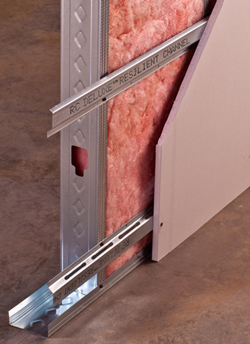Hold on guys...I'll straighten out this 1.25 inch issue for you.
Massachusetts revised 334.17 so the 1.25 inch rule only applies to bored holes. So running romex across the top of them strappings is OK...and really fast to ruff a home. I never had any problem with screws hitting the romex.
Here is the amendment...
334.17 Through or Parallel to Framing Members and Furring Strips. Types NM, NMC, or NMS cable shall comply with 300.4 where installed through studs, joists, rafters, and similar members. Grommets or bushings shall be used in metal studs as required in 300.4(B)(1),shall remain in place during the wall finishing process, shall cover the complete opening,and shall be listed for the purpose of cable protection.In both exposed and concealed locations, where the cable is installed parallel to framing members, such as joists, rafters, or studs, or is installed parallel to furring strips, the cable shall be secured so that the nearest outside surface of the cable is not less than 19 mm (¾ in.) from the nearest edge of the framing member or furring strip where nails or screws are likely to penetrate. Where this distance cannot be maintained, the cable shall be protected from penetration by nails or screws by a steel plate, sleeve, or equivalent at least 1.6 mm (1/16 in.)thick. A listed and marked steel plate less than 1.6 mm (1/16 in.) thick that provides equal or better protection against nail or screw penetration shall be permitted for this purpose.Exception: For concealed work in finished buildings, or finished panels for prefabricated buildings where such supporting is impracticable, it shall be permitted to fish the cable between access points.



